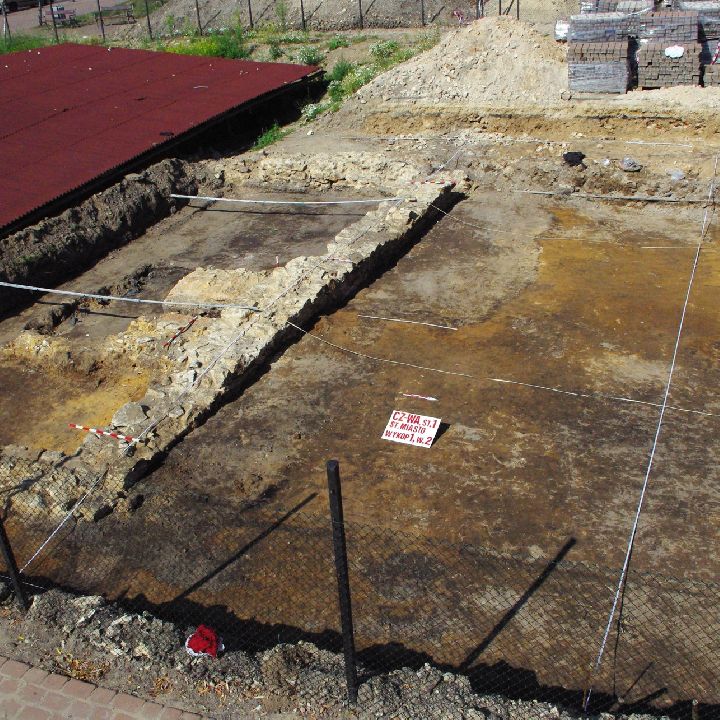Weigh house
Weigh houses – the second most important municipal institutions – were often built near the seats of municipal authorities. These public buildings began to be established in self-governing towns, especially once they were granted trade privileges, and primarily the staple right. City councils used weigh houses to control the trade at market squares and also influenced the local trade. Moreover, they were a source of steady and substantial municipal income. The officials working in the weigh house used the assistance of a scrivener and porters whose job was to load the goods onto the scales and then carry them to a designated location. The scales were either housed in specially designated rooms of the town hall or in individual buildings in the market square. Apart from the scales, the weigh houses also housed standards of other measures, for example, korzec – a unit of volume and units of length (pręt, łokieć, stopa). The scales were always used under the watchful eye of a town official. Towns that were awarded the privilege of trading in metals, salt, wool, and tallow were usually given the right to establish a weigh house. The legal regulations in this respect were recorded in the town privileges, the records of Vogtei overlordship and in other privileges granted to towns. It is acknowledged that such privileges were granted to Kraków’s Kazimierz district, Lanckorona (1366), Tyczyn, and Żarnowiec (1389), among others. In principle, the right to operate a weigh house was granted to towns in the first period of their functioning; however, the construction of the buildings typically took place much later. Initially, towns that built their town halls early housed the official municipal scales inside these buildings, in rooms specially designated for this purpose. If the town hall building was too small and prevented the local authorities from correctly conducting their responsibilities, additional premises were often added to secure the needs resulting from the operation of the municipal scales. An example of such a solution is the town hall in Tarnów. In certain cases, the scales were placed inside the town hall’s courtyards, as was done in the town of Siemiatycze. In most cities, separate weigh houses were erected only later, most often at the beginning of the 17th century. These were wooden or brick buildings. This device was necessary for high trade turnover or trade in heavy goods.
We do not have any direct evidence that Częstochowa had a weigh house. Known sources do not reveal this fact. We know, however, that between the 15th and 17th centuries, there was a separate Częstochowa measure. At that time, Częstochowa was actively involved in long-distance trade. On the basis of entries in the registers of customs chambers, it is possible to determine that it had a leading role in Polish-Silesian trade. The merchants of Częstochowa traded oxen, iron, salt and groats. Trade is evidenced by the registers of the customs chamber that operated here from the 14th century, recorded in 1584. Given this situation, having an urban weight was most likely essential to the functioning of the city.
An addition to the town hall on the north side, with dimensions of 6.8 m x 11 m, could have served as the municipal weigh house in the city’s market square. The area was 76 m2. It did not have a cellar, and its foundation walls were rather shallow, with a thickness from 30 cm to a maximum depth of 110 cm in a small section, erected from selected blocks of crushed limestone laid in layers on a sand-lime mortar. The shallowness of the foundation proves that it was meant to support a small building, probably wooden. Inside the building, relics of a tiled stove have been discovered. This building stood where an earlier wooden structure once stood.
On the north side of the town hall, remains of wooden buildings, probably built in the half-timbered method, were discovered and examined. On the relics of these buildings, the foundations of a younger building were laid, allegedly of municipal importance, adjacent to the town hall on the north side. Fragments of not fully burnt log walls and wooden flooring have survived. Under several layers of wooden floors, there were wooden, box-type cellars.

